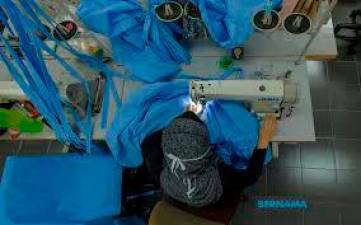
Follow us on Instagram and subscribe to our Telegram channel for the latest updates on news you need to know.
PARIS, May 31 — The OECD raised its 2021 global GDP growth forecast today but warned that “too many headwinds persist” as not enough Covid vaccines are reaching emerging economies, making the world vulnerable to variants.
The world economy will expand by 5.8 per cent this year, up from a previous estimate of 5.6 per cent, the Paris-based Organisation for Economic Co-operation and Development said in a report.
This follows a massive global recession last year that was caused by lockdowns and travel curbs imposed by governments to slow the spread of Covid-19.
“It is with some relief that we can see the economic outlook brightening, but with some discomfort that it is doing so in a very uneven way,” OECD chief Laurence Boone said in the report.
The recovery is uneven so far, with the United States and China returning to pre-pandemic levels and forecast to have much stronger growth than other major economies such as Japan and Germany.
The 38-nation organisation, whose members account for 60 per cent of global gross domestic product, applauded the rapid reaction of governments to prop up the economy.
“Never in a crisis has policy support—be it health, with the record speed of vaccine development, monetary, fiscal or financial—been so swift and effective,” Boone said.
“Yet, too many headwinds persist,” she warned.
Boone said it was “very disturbing” that not enough vaccines were reaching emerging and low-income economies.
“This is exposing these economies to a fundamental threat because they have less policy capacity to support activity than advanced economies,” she said.
The warning comes as the emergence of more contagious coronavirus variants has raised concerns around the world, with India battling a strain that has caused a surge in cases and deaths.
“As long as the vast majority of the global population is not vaccinated, all of us remain vulnerable to the emergence of new variants,” Boone said.
‘Vigilance is needed’
New lockdowns would hurt confidence while companies, which are saddled with more debt than before the pandemic, could go bankrupt, she said.
Another risk to global GDP is how financial markets could react to concerns about inflation, the OECD said.
Analysts have voiced concerns that rising inflation will prompt central banks to withdraw their easy-money policies to prevent the economy from overheating.
The OECD said the price increases are only temporary and linked to the economic recovery.
“What is of most concern, in our view, is the risk that financial markets fail to look through temporary price increases and relative price adjustments, pushing market interest rates and volatility higher,” Boone said.
“Vigilance is needed.” — AFP
Source: Malay Mail















.JPG)







